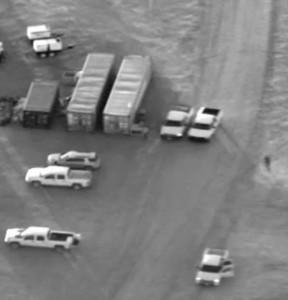After Boston, new motivation for surveillance techies
Even before the Boston bombings, the Air Force Research Lab in Rome, New York, was trying to figure out how to stitch together imagery and video from disparate sources, and give analysts the software tools to make sense of the information.
The attack at the Boston Marathon is now hot on the minds of officials in Rome, where the main customer is the military, but processes are in place to share technologies with other agencies.
“Look at Boston,” said the lab's Frank Hoke. His role is to foster technical collaboration among the Air Force, private companies, universities and other agencies, including the Department of Homeland Security. “How do we make things faster? How do we make decisions faster?” he said.
Investigators in Boston were faced with a torrent of imagery, including surveillance video, smartphone images, and Facebook postings. The military faces a similar fusion challenge in war zones.
One kind of imagery the Boston investigators didn’t have, as far as we know, was wide area surveillance imagery from drones or aerostat balloons. When a bomb goes off in range of one of these cameras in Afghanistan, the military runs the city-sized snapshots in rewind mode in hopes of tracking bombers back to their lairs. The military wants to do more than that, and Rome lab wants to be on the cutting edge of the work.
“The desired end state is to move away from a forensic analytics push to a predictive analysis piece,” said Frank Purdy, director of national security services for Logos Technologies in Arlington, Va.
The idea is to automatically alert analysts to suspicious activity in one corner of a vast image. The analyst would study the scene with other intelligence collections to figure out what the people in the image are about to do next.
Logos makes the Kestrel wide area cameras that are flown on aerostats in Afghanistan. By June 1, Rome is scheduled to get a fresh supply of archived wide area imagery from Logos under a cooperative research agreement reached before the Boston bombings.
One of Hoke’s jobs is to transfer technologies for domestic use. Will the military’s wide area surveillance technology be next?
Hoke doesn’t know, but he said any such transfer would be done thoughtfully.
“We know about Posse Comitatus,” he said, referring to the 19th Century law that prevents the federal military -- although not state-run National Guard units -- from being used domestically. “We can train people to do stuff, we can give people technology, but we cannot be sitting there,” he said.
Logos and the Air Force are waiting for the information assurance approvals that would let them get to work with the data and software tools.
No money will change hands under the cooperative agreement: The Air Force gets wide area imagery, and Logos gets broader visibility for the analytical tools it develops.
One of those tools lets analysts draw watch boxes onto their screens.
“If people move in and out of that scene, if there’s a significant event inside of that scene, that will cue the analyst to move his view to that exact location and zoom in to evaluate what’s going on,” said Purdy.
Deep Dive spoke to Purdy before the Boston bombings, and at that time he was cautious about domestic applications, pointing mostly to border surveillance as a possible use.
“Everybody has their right to privacy, and we believe in them very strongly,” Purdy said. “We as a country. We as a company and me as an individual.”
But border states like Texas “have a lot of concern for the safety of their citizens when it comes narcotics operations, drug smuggling, and a host of other things. Why wouldn’t we want to share this capability, this technology?” he added.



